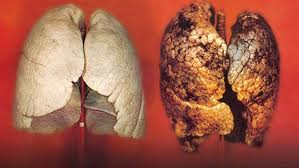SINTEF Technology and Society, Department of Health Research, is currently heading a large project financed by the Norwegian Research Council, aiming at providing better healthcare and life quality for persons suffering from COPD. COPD usually strikes during working age, and causes great sufferings for those affected by it, as well as large social costs.
The objective of this project is to investigate the role of gender, socio-economic status and geography for COPD. The project combines data from several registers with national coverage, which means we are able to study the whole population of COPD patients, rather than small samples from specific geographic regions or hospitals, which are often the case in other studies. Our data sets contain patient-level data which include information on patient characteristics (age, gender, severity, diagnosis, type of hospital treatment, procedures, length of stay, re-admissions, etc.), socioeconomic background (education, income, housing, occupation), use of prescribed medicine (types of medicine, doses, etc.) and hospital characteristics (size, case-mix, efficiency, etc.). Building on these data, the project aims to investigate the following research questions:
- The use of addictive drugs among persons with COPD
Due to the great sufferings and high mortality risk associated with COPD, such patients can be expected to have a higher risk of anxiety and depression. Few studies have examined the prevalence of depression and anxiety in persons with COPD outside of the clinic or inpatient setting. We will compare the prescribing of medicine for anxiety and depression to these patients with that of the general population, controlling for important background factors such as gender, age and comorbidity. - Geographic variation in prevalence and treatment of COPD
By exploring geographic differences in COPD one may identify factors that are associated with lower prevalence or more efficient types of treatment, and thereby discover care practices that are related to better outcomes. Earlier studies have indicated the importance of the healthcare system, even after controlling for important factors such as climate, rurality, industrial structure and socioeconomic characteristics, and understanding the reasons underlying such variations thus become important. Several aspects of the healthcare system may play a role, such as differences in primary care access, medical practice patterns, and hospital organisation. - Socioeconomic status and risk of hospitalization and mortality in COPD
The socioeconomic gradient in COPD is as great, if not greater, than in any other disease. Risk factors linked to socioeconomic status are usually thought to be prenatal exposure, poor housing conditions, exposure to community air pollution, smoking, and occupational exposure. We will study whether a person's socioeconomic status also affects access to and quality of health services, as well as mortality risk, associated with COPD. The multidimensional nature of socioeconomic status implies that it cannot be completely measured with one variable only, and our data allows us to test the role of multiple measures: education, income (personal and household), housing conditions, occupational status, and type of occupation.

